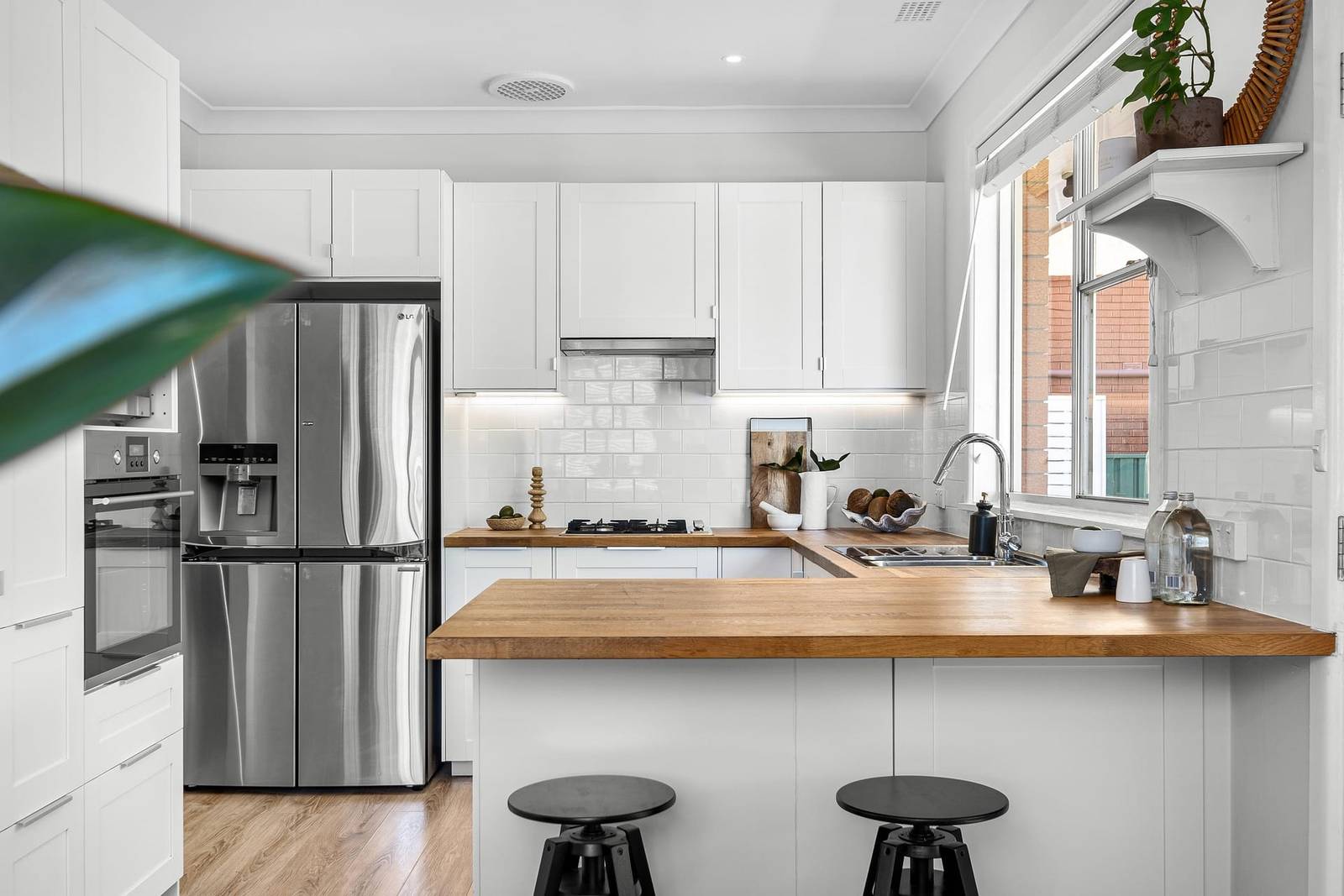Cleaning a swimming pool is a diligent process that involves various steps to ensure the water remains crystal clear and safe for swimmers. Swimming pool maintenance is crucial not only for aesthetic reasons but also for health and safety. The Importance of Pool Maintenance serve as refreshing retreats and hubs for recreation, but without proper maintenance, they can become breeding grounds for bacteria, algae, and other contaminants. Regular cleaning is essential to ensure the water is safe, clear, and inviting. The process involves a combination of manual labor, chemical treatment, and technological advancements. Many pool constructors are offering swimming pool cleaning services using there techniques. We’ll see details of how swimming pool cleaners do cleaning, exploring the key steps and technologies involved in this essential task.
1. Skimming and Surface Cleaning
The first line of defense in swimming pool cleaning is skimming the surface. Skimmers, typically located at the waterline, draw in debris like leaves, insects, and other floating particles. This prevents them from sinking to the pool bottom, making it easier to maintain water clarity. Manual skimming with nets is also common for larger debris that may escape the skimmer. Regular skimming not only enhances the pool’s aesthetic appeal but also helps maintain optimal water circulation and filtration efficiency. By removing debris promptly, skimming prevents the buildup of organic material that can lead to water imbalances, algae growth, and increased demand on the pool’s chemical treatment system. Surface cleaning involves the removal of finer particles and contaminants that may escape the skimming process. This is typically done using a swimming pool net or leaf rake, manually or attached to a telescopic pole for reaching the pool’s center and deeper areas.
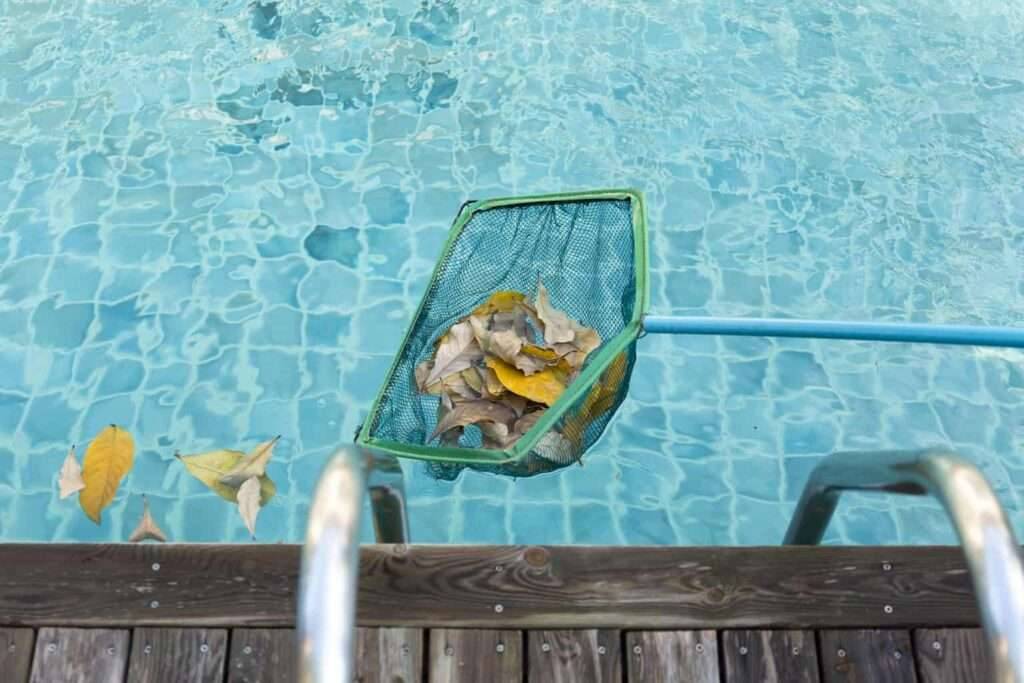
2. Vacuuming the Pool Bottom
While skimming takes care of surface debris, the swimming pool’s bottom also requires attention. Vacuuming is a crucial step in removing dirt, sand, and smaller particles settled on the pool floor. Pool vacuums come in various types, including manual, automatic, and robotic. Manual vacuums are operated by hand, while automatic and robotic versions are more advanced, navigating the pool autonomously. Vacuuming the pool bottom is a crucial aspect of swimming pool maintenance, contributing to the overall cleanliness and hygiene of the pool water. Regular vacuuming helps remove debris, dirt, and other particles that settle on the pool floor, ensuring a clear and inviting swimming environment.
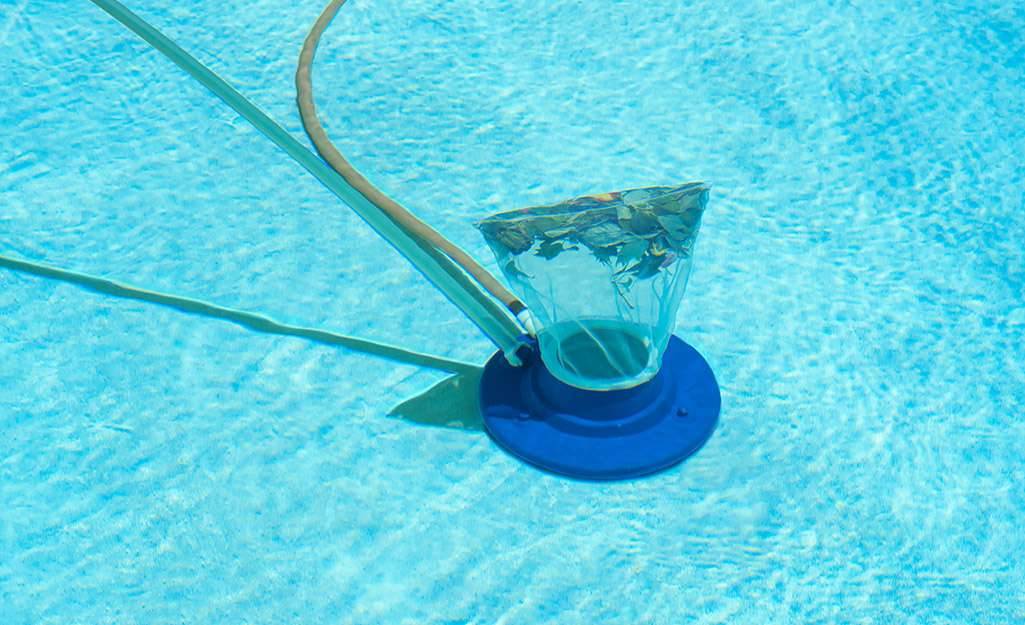
3. Brushing and Scrubbing
Brushing and scrubbing are essential maintenance tasks for ensuring the cleanliness and hygiene of a swimming pool. Algae and bacteria can cling to pool surfaces, leading to unsightly stains and potential health hazards. Regular brushing and scrubbing of the pool walls and floor help prevent the build-up of these contaminants. Nylon brushes are commonly used for concrete and gunite surfaces, while softer brushes are suitable for vinyl or fiberglass swimming pools. Regular brushing and scrubbing should be incorporated into the pool maintenance routine. The frequency may vary based on factors such as pool usage, weather conditions, and the surrounding environment. The choice of brush depends on the pool surface material. For concrete pools, stainless steel brushes are suitable, while nylon brushes are gentler and more appropriate for vinyl or fiberglass surfaces.
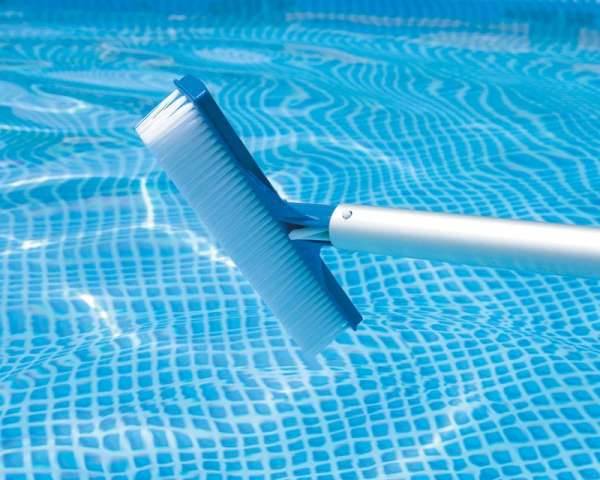
4. Filtration Systems
Filtration systems play a crucial role in maintaining the cleanliness and water quality of swimming pools. Whether in residential or commercial settings, an effective filtration system is essential for removing impurities, debris, and contaminants from the water, ensuring a safe and enjoyable swimming experience. Filtration systems are the backbone of pool cleanliness. They remove impurities and particles that the skimmer and vacuum might miss. Sand, cartridge, and diatomaceous earth (DE) filters are the most common types. The filter circulates water through a medium that traps debris, allowing clean water to return to the swimming pool. Regular cleaning and backwashing are essential to maintain filter efficiency.
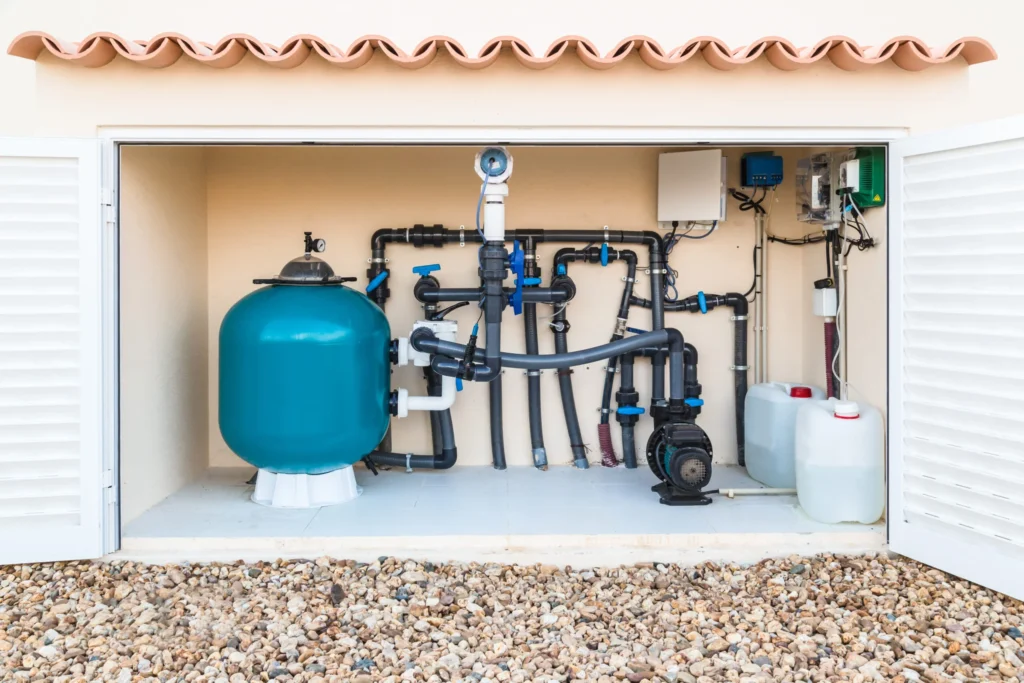
5. Chemical Balancing
Chemical balancing is a crucial aspect of maintaining a healthy and safe swimming pool environment. Proper chemical balance ensures that the water is free from harmful microorganisms, algae, and contaminants, providing swimmers with a comfortable and enjoyable experience. Maintaining the right chemical balance in a pool is critical for preventing the growth of harmful bacteria and algae. This is crucial especially for kids swimming pools.
Testing the water regularly for pH, chlorine, alkalinity, and calcium hardness levels ensures that the pool remains safe and comfortable for swimmers. Chemicals like chlorine are used to disinfect the water and kill bacteria, while pH adjusters maintain the water’s acidity or alkalinity. The optimal pH range is between 7.2 and 7.6. This slightly alkaline range ensures the effectiveness of other chemicals and prevents skin and eye irritation. Chlorine is a primary disinfectant that eliminates bacteria, viruses, and other harmful microorganisms in the swimming pool water. The recommended chlorine level is typically between 1.0 and 3.0 parts per million (ppm).
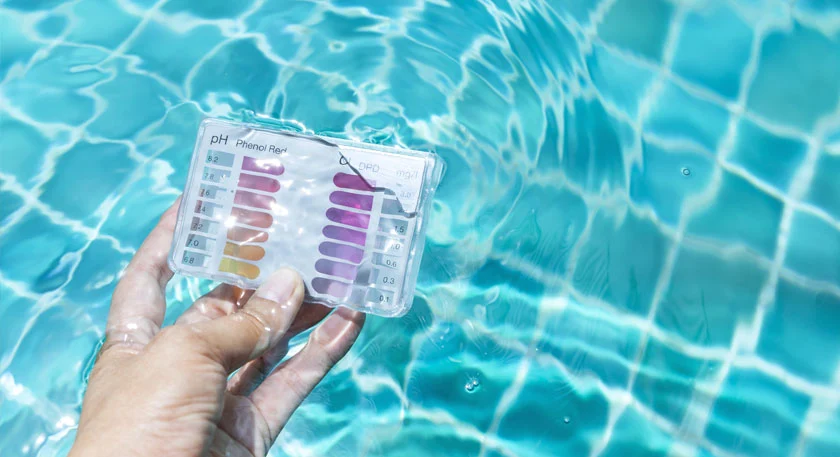
6. Shock Treatment
In addition to regular chemical balancing, pools often require shock treatment. This involves adding a higher dose of chlorine to rapidly eliminate contaminants like bacteria and algae. Shocking is typically done at night or when the pool is not in use to allow the chemicals to work effectively without interference from sunlight. The primary goal of shock treatment is to oxidize or break down organic and inorganic contaminants that accumulate in the swimming pool water. These contaminants can include bacteria, algae, sweat, urine, and other substances introduced by swimmers. Regular sanitization with chlorine may not be sufficient to handle the sudden influx of these impurities, and that’s where shock treatment becomes crucial.
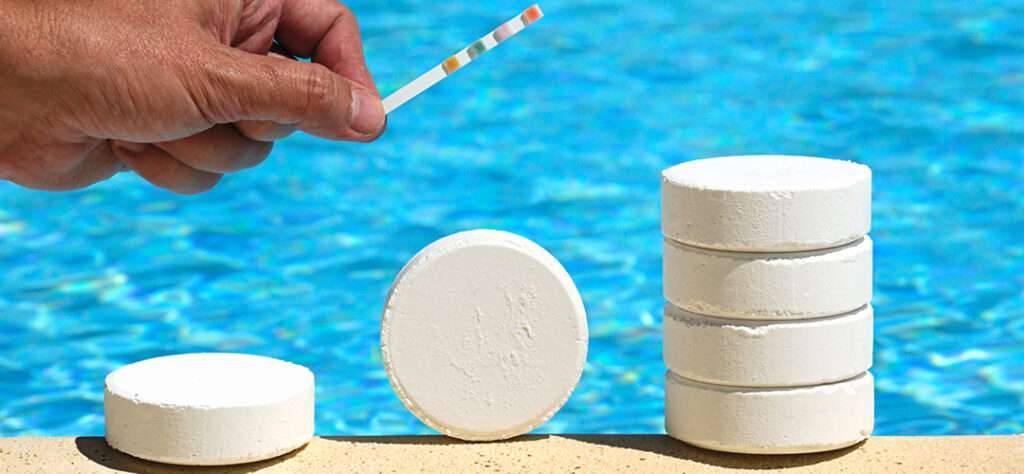
7. UV and Ozone Treatment
Maintaining crystal-clear and hygienic water in swimming pools is paramount for ensuring a safe and enjoyable aquatic experience. Traditional chlorine-based methods have long been the go-to solution, but advancements in water treatment technologies have introduced alternative methods such as UV (Ultraviolet) and Ozone treatment. Advancements in pool technology have introduced alternative methods of water treatment. Ultraviolet (UV) and ozone systems are becoming popular for their ability to reduce the reliance on traditional chemical treatments. UV light and ozone help neutralize bacteria and pathogens, providing an additional layer of sanitization. These innovative approaches not only improve water quality but also contribute to a healthier and more sustainable pool environment.

8. Remote Monitoring and Automation
In the age of smart technology, remote monitoring and automation have revolutionized pool maintenance. Remote monitoring and automation systems for swimming pools have revolutionized the way pool owners manage and maintain their aquatic environments. These advanced technologies integrate sensors, controllers, and connectivity solutions to provide users with real-time insights and control over various aspects of pool operation. Smart devices allow pool owners to monitor water
quality, control filtration systems, and even schedule cleaning tasks from their smartphones. it enhance convenience and ensure response to any issue detected.
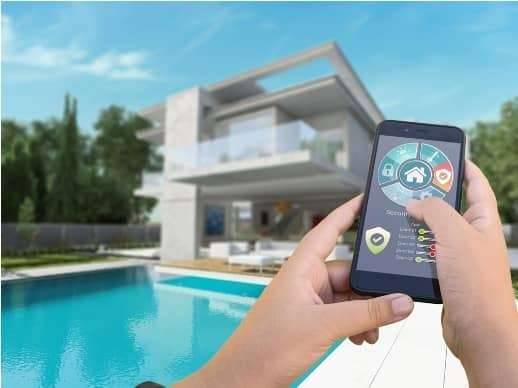
9. Regular Inspections and Maintenance
Regular inspections and maintenance are essential aspects of ensuring the safety, functionality, and longevity of a swimming pool. Whether it’s a residential pool or a commercial facility, routine care is crucial to prevent issues, promote water quality, and create an enjoyable swimming environment. Checks Preventive measures play a crucial role in maintaining a clean swimming pool. Regular inspections help identify issues before they increase. This includes checking for leaks, inspecting the condition of filters and pumps, and ensuring that all components are functioning optimally.
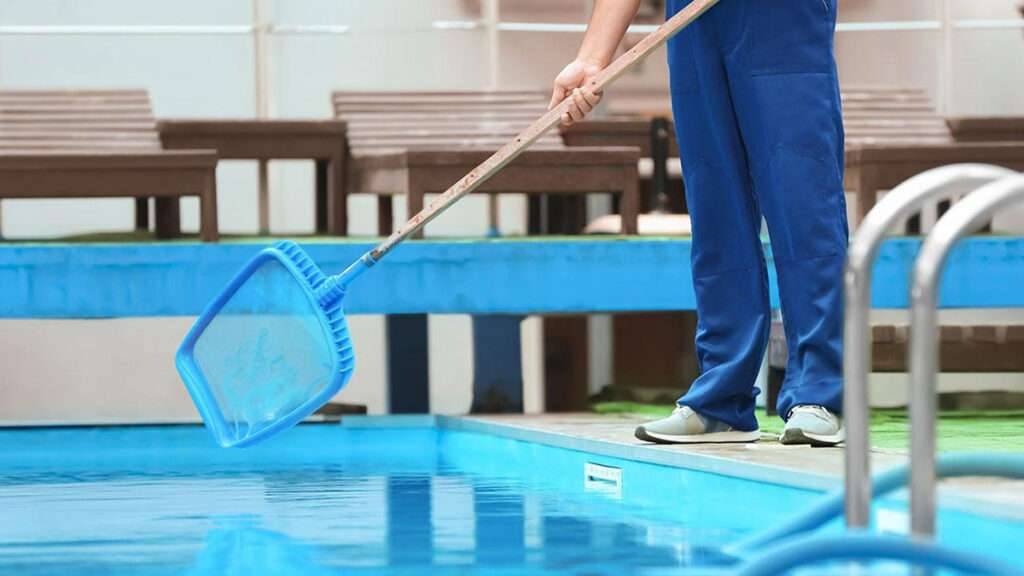
KLG Technical Services offering best swimming pool cleaning services along with construction and renovation. Consider doing all the steps given above or KLG will be pleased to do it for you.
Considerations while cleaning swimming pool
Environmental Considerations in Pool Maintenance
In the quest for maintaining crystal-clear water, there is a growing awareness of the environmental impact of traditional pool cleaning methods. Many pool owners are exploring eco-friendly alternatives to reduce their carbon footprint. This shift includes using environmentally friendly cleaning agents, exploring energy-efficient filtration systems, and adopting sustainable practices in pool maintenance.
Eco-Friendly Cleaning Agents of swimming pool
The chemicals traditionally used in pool maintenance, while effective, can have environmental implications. Chlorine, for example, can produce harmful by-products. As a response to this concern, there is a rising interest in eco-friendly alternatives. Swimming pool constructors are now using chlorine-free shock treatments, natural enzyme-based cleaners, and mineral-based sanitizers. These alternatives aim to provide effective cleaning without compromising environmental health.
Energy-Efficient Filtration Systems
Traditional pool filtration systems can be energy-intensive. As sustainability gains importance, pool owners are increasingly turning to energy-efficient options. Variable-speed pumps, for instance, allow for customized flow rates, optimizing energy consumption. Additionally, solar-powered pumps and filters harness the sun’s energy to reduce dependence on conventional electricity sources, making pool maintenance more eco-friendly.
Rainwater Harvesting for Pool Refilling
Water conservation is a critical aspect of responsible pool ownership. Rather than relying solely on municipal water supplies to refill pools, some environmentally conscious pool owners are implementing rainwater harvesting systems. These systems collect rainwater, often from the roof of a house or a dedicated collection area, and redirect it to the pool. It can work as a direct swimming pool water supply. This not only reduces the demand on local water supplies but also minimizes the environmental impact associated with water extraction and treatment. Swimming pool cleaning companies are working to reduce any kind of waste.
Natural Pool Designs
An emerging trend in pool maintenance is the concept of natural or eco-pools. These pools aim to replicate natural bodies of water, using plants and natural filtration methods to maintain water quality. By integrating biological filters, gravel beds, and aquatic plants, these pools minimize the need for traditional chemical treatments. While they may not suit every setting, natural pools exemplify the evolving approach toward more sustainable and harmonious pool maintenance.
Community Initiatives and Education
The shift towards environmentally conscious pool maintenance is not confined to individual pool owners. Communities are also getting involved in collective efforts to promote sustainable practices. Pool associations and local authorities are organizing workshops and educational programs to raise awareness about eco-friendly pool maintenance. This collaborative approach fosters a sense of responsibility and encourages broader adoption of environmentally sustainable practices.
Future Innovations in Pool Cleaning
Looking ahead, the landscape of pool maintenance is poised for continuous innovation. Researchers and engineers are exploring cutting-edge technologies to further enhance the efficiency and sustainability of pool cleaning processes. Nanotechnology, for instance, holds promise in developing advanced filtration systems that can remove even the tiniest impurities from pool water. Additionally, artificial intelligence may play a role in optimizing pool maintenance schedules, adapting to usage patterns, weather conditions, and water quality.
In this evolving landscape, the convergence of technology, eco-friendly alternatives, and community awareness paints a promising picture for the future of pool cleaning. Whether through advanced filtration systems, sustainable chemicals, or communal efforts to educate and promote responsible practices, the goal remains the same – to enjoy the pleasures of a sparkling pool while safeguarding the environment for generations to come. As we collectively embark on this journey towards greener pool maintenance, each step taken brings us closer to a harmonious coexistence of recreational luxury and environmental stewardship.

